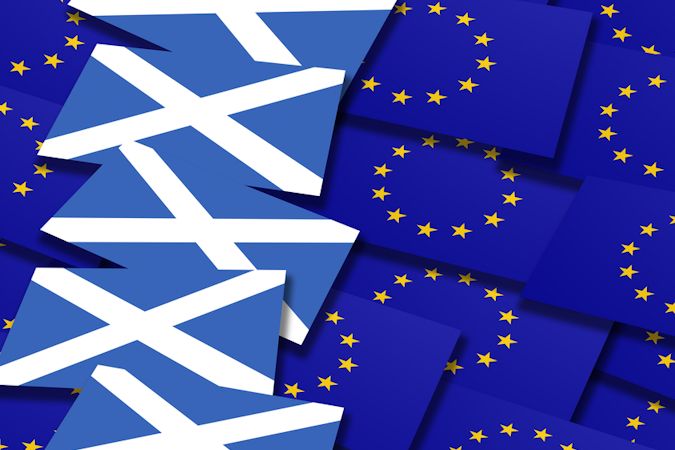The First Minister, Nicola Sturgeon, has outlined the Scottish Government’s proposals for Scotland’s Brexit settlement, in a paper titled ‘Scotland’s Place in Europe’.
This paper will be delivered to the UK Government ahead of the next Joint Ministerial Meeting and provides the basis for the Scottish Government’s input into the UK’s decision making on its negotiation principles with the EU. The proposals within the paper seek to ‘protect Scottish national interests’ and fall along three main lines:-
- Arguing in favour of the UK to remain a member of the European Single Market (including access to Single Market; membership of the European Economic Area and EU Customs Union)
- Outlining the differentiated options for Scotland (within the UK) to maintain the closest possible relationship with Europe; the favoured approach is the Norway Model (membership of EEA but not EU Customs Union)
- Expanding the powers of Holyrood (powers repatriated from EU to Holyrood that will enable access to Single Market more likely) Norway Model – Scottish Government’s preferred option
The First Minister made it clear that the Scottish Government’s favoured solution was for the UK, as a whole, to remain a member of the European Single Market through the European Economic Area Agreement. However, if the rest of the UK chooses to leave the EU and EEA, the Scottish Government wants a differentiated solution for Scotland to be built into the negotiations. The Scottish Government’s preferred solution is that of the ‘Norway Model’. This agreement would seek to keep Scotland in the European Economic Area (EEA), by Scotland becoming a full or associate member of the European Free Trade Agreement (EFTA), and thereafter becoming party to the EFTA EEA Agreement. This would allow the UK to leave the EU, but for Scotland to retain access to the Single Market, and uphold the ‘four freedoms’; free movement of people, goods, services, and capital. This would be subject to negotiations by all parties and the paper explicitly states that ‘concessions’ would need to be made on all sides.
New devolved powers – the Scottish Government has outlined which powers they wish to see devolved to Holyrood. If the rest of the UK seeks to leave the Single Market, the Scottish Government wants new powers over trade, immigration, and concluding international agreements in order to meet the requirements of EEA membership. They also outlined other powers which they want to see devolved, such as employment and health and safety laws, citing the need to protect key rights. In addition, powers over fishing, agriculture, and social protection are also requested. The paper does not give any further indication on the potential for a future Independence Referendum, but the underlying message implies that maintaining access to the Single Market is more or less a ‘line in the sand’ for the Scottish Government.
Early analysis – the Scottish Government’s main priority is to obtain further devolved powers for Holyrood, and the FM again reiterated that the Scottish Government retains the options to call a second referendum to “protect Scotland’s interests” (if they do not get enough concessions from Westminster). Yesterday’s proposals are being floated as a compromise, however it is highly unlikely that proposals over a differentiated trade and immigration status will be agreed to, with the UK government having already ruled out a special deal for Scotland. The UK government is likely to grant some further powers to Holyrood as part of a Brexit settlement, perhaps in areas like fishing, farming and employment that were outlined yesterday.
However, it is likely that the SNP knows that there is no hope of Scotland alone remaining in the Single Market, but is leveraging this position to gain further concessions, or – if there is public appetite – to trigger a second referendum. However, the First Minister was careful not to place too much emphasis on a second referendum during yesterday’s announcement. Instead she sought to focus on what options there are for a post-Brexit Scotland, underlining that while some options sound difficult this was not a reason to ignore them. The proposals outlined yesterday will be submitted to the UK Government for further discussion, through the Joint Ministerial Committee framework. They will also be discussed with other devolved authorities at the Joint Ministerial Council, which will be meeting again in early January.
Click here to download a copy of the ‘Scotland’s Place in Europe’ paper.

